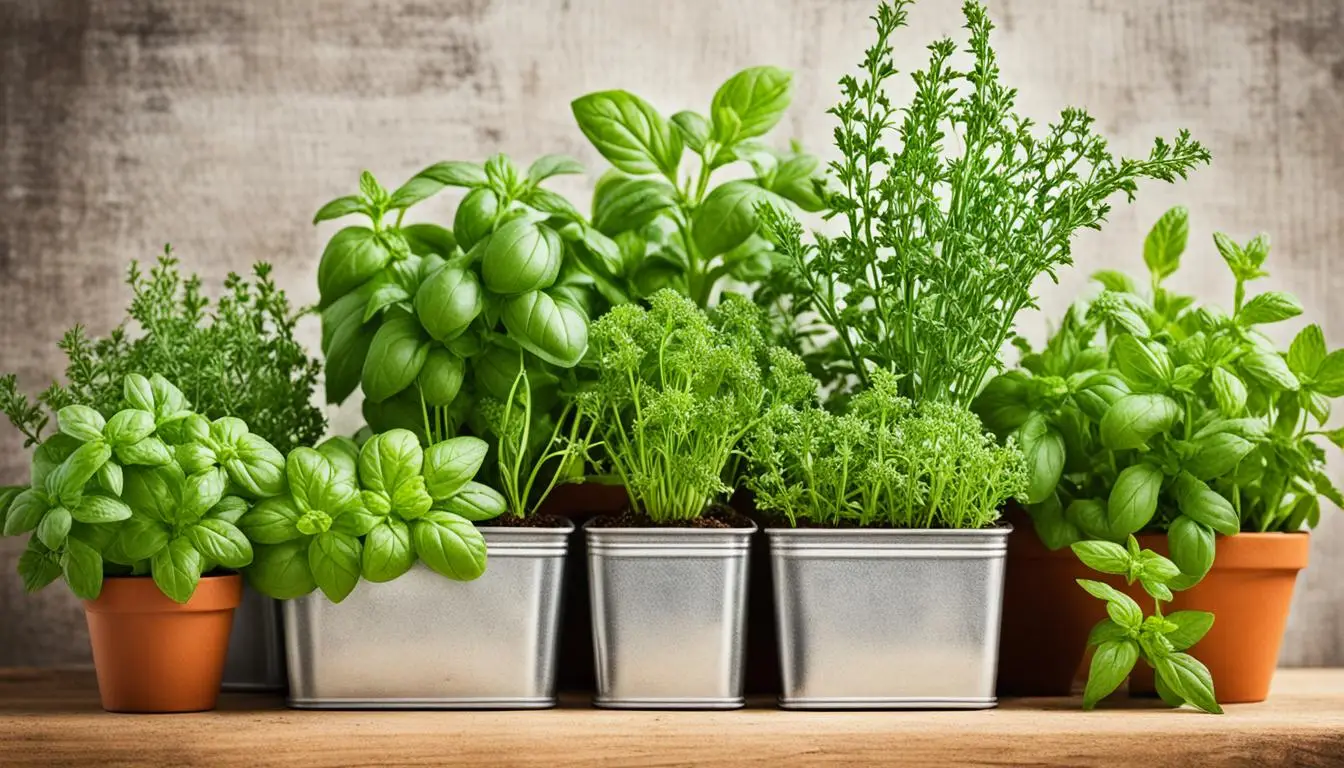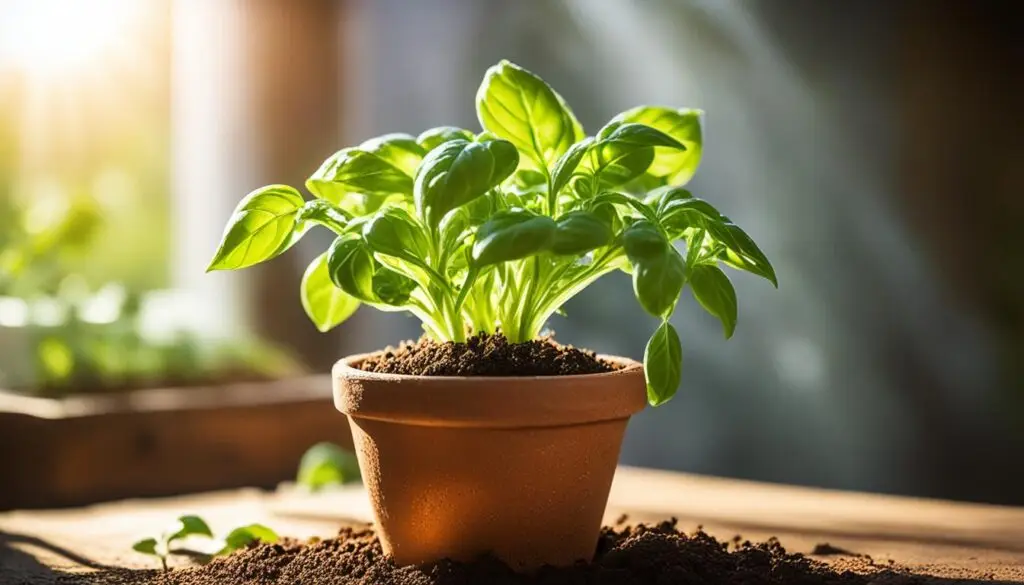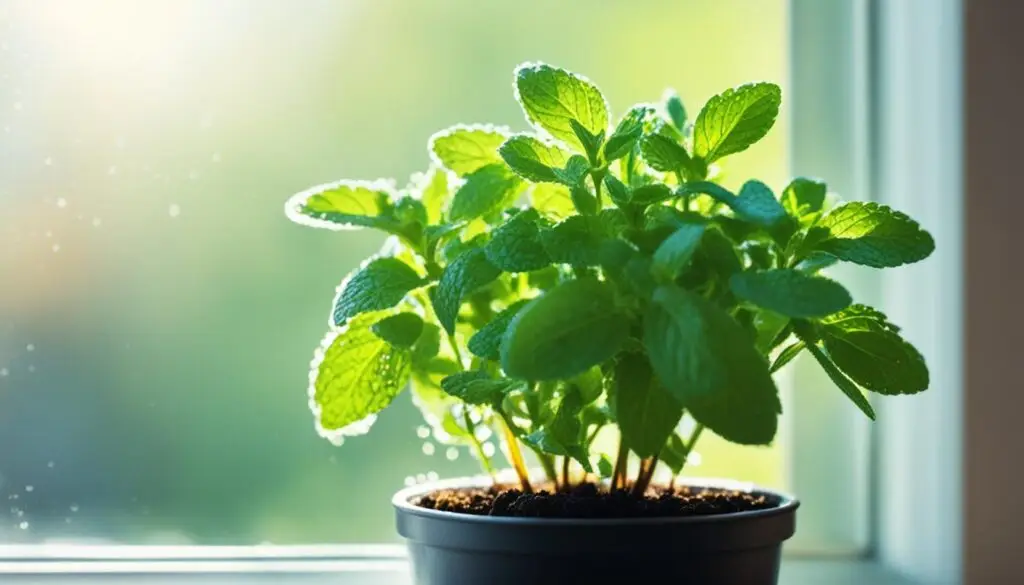Some easy herbs to grow are chives, basil, mint, oregano, and parsley. These simple herbs for beginners need little effort to thrive. They easily start from seeds and bless you with lots of harvest. They are perfect for those starting herb gardening for novices.
These plants keep coming back, making growing herbs a long-term joy. When you grow low-maintenance herbs like these, you save money and spice up your dishes. They also help bring good bugs to your garden.
Key Takeaways
- Chives, basil, mint, oregano, and parsley are some of the easiest herbs to grow.
- These herbs have simple planting requirements and need little care to thrive.
- They are resilient, often self-seeding, and excellent choices for beginner gardeners.
- Growing your own herbs can save money, reduce food waste, and provide fresh flavors.
- Herb gardening can also attract beneficial insects to your garden.
Introduction to Easy-to-Grow Herbs
Gardening is rewarding, but growing herbs can seem tough for beginners. Yet, herbs that are easy to grow need little attention and offer plenty of harvest. They don’t need much space, sunlight, or soil. This makes them perfect for everyone, no matter their gardening experience.
Characteristics of Easy Herbs
Easy-to-grow herbs have key traits that help them succeed. They’re easy to plant, and can be moved straight into the ground. These herbs don’t need a lot of care to grow and stay healthy. They also usually give a lot of fresh, tasty leaves and stems.
Benefits of Growing Your Own Herbs
Growing your own herbs can be better in many ways. It saves money by cutting your herb-buying costs. It reduces food waste because you only pick what you need. And, you get to feel the joy of growing plants that add great flavor to your meals. This makes your cooking better and brings home-grown goodness to your family’s table.
Chives: The Carefree Allium
Chives are known as one of the easiest herbs to grow. They do well in various soils and don’t need much care. It’s best to buy chive plants from a local store. This ensures they’re used to the area’s weather. Chives love the sun but can also live with some shade. To make them grow lots of leaves, remove any buds that turn into flowers.
Planting and Growing Chives
Chives plant care is easy. You can start them from seeds. But, using plants you buy is simpler. After planting, chives come back every year. They will spread and make your garden smell great. It’s a good idea to split the chives every now and then. Then, plant the splits again. This keeps the plants strong and fruitful.
Culinary Uses for Chives
Cooking with chives is fun. These tasty plants give food a mild onion taste. You can cut the fresh leaves into your meals. They’re great on soups, salads, eggs, and more. Chives make dishes with fish and sauces even better. They not only look good but also add a nice flavor. Chives are essential for any cooking space.
Basil: The Versatile Mediterranean Herb
Basil is a popular herb that loves warm and sunny weather. It needs soil that drains well. This herb is part of the mint family, which makes growing basil fun for everyone.
Tips for Growing Flavorful Basil
To help basil grow well, regularly pinch off the top leaves. Cut about a third of the plant each time. This method boosts new growth and keeps the basil plant bushy. Remember not to water it too much. Overwatering causes the leaves to turn yellow. Let the soil dry a bit between watering for the best basil plant care.
Recipes Featuring Fresh Basil
Fresh basil adds a unique smell and taste to many dishes. It’s used in classics like pesto and caprese salads. You’ll also find it in sauces and garnishes from the Mediterranean and Italy. Basil’s light and slightly spicy flavor goes well with tomatoes, olive oil, and different meats. It’s perfect for both salty and sweet recipes.
What’s the Easiest Herbs to Grow? Mint: The Refreshing Spread
Mint is one of the easiest herbs to grow. It is very strong and can grow a lot. Yet, this is a downside too. Mint can take over if you don’t control it. To avoid this, many experts say you should plant mint in pots. You can also put the pots in the ground or use a pot-in-pot method.
Containing Mint’s Exuberant Growth
Keeping mint in a pot means you can enjoy its fresh leaves. This way, it won’t crowd the other plants in your garden. Mint loves the sun and needs regular water. Make sure the top layer of soil is damp but not soaked.
Minty Summer Drinks and Desserts
After you learn how to grow and control mint, you can use it in cooking and drinks. You will find so many uses for fresh mint. For summer, it’s great in cold teas, lemonades, mojitos, and mint juleps. It also makes sweet treats like fruit salads, ice creams, pies, and sorbets taste fresh and cool.
Oregano: The Perennial Mediterranean Delight
Oregano is a plant that comes back each year. It’s not hard to take care of. People say to plant oregano in sunny spots, leaving 8-10 inches between them. It likes soil that drains well. Oregano will spread on its own and keep coming back. To have a healthy plant, cut off dead leaves and trim the stems sometimes.
Using fresh oregano makes food taste better. It goes well with foods like tomatoes and olives. Oregano as a perennial herb is good in the garden too. It helps keep bugs away and brings in helpful insects.
Oregano is tough and can grow in many soils. It’s great for all gardeners. You’ll get to use its tasty leaves every year. Plus, it helps fight off plant pests naturally.
Parsley: The Biennial Herb Garden Staple
Parsley is a two-year herb that’s pretty easy to grow, especially for new gardeners. It’s best to begin parsley seeds indoors in March or April. Then, move them outside when it gets warmer. Since parsley has a long root, make sure not to harm it when moving.
Growing and Harvesting Parsley
When parsley is strong, cut its outer leaves for use. This step helps the plant keep growing all season. You’ll always have fresh parsley for your dishes this way.
Parsley’s Role in Attracting Beneficial Insects
Parsley does more than just add taste to meals. It’s great for the garden too. The small leaves and flowers of parsley draw in good bugs like ladybugs and lacewings. These helpful insects keep harmful pests away, creating a safe home for your garden plants.
Conclusion
In conclusion, chives, basil, and mint are easy for beginners. Oregano and parsley are also simple to grow. They need little care and give you lots of herbs. This makes them perfect for starting an herb garden.
When you grow your own herbs, you can save money and reduce waste. You’ll also get fresh tastes for cooking. Plus, you’ll see more helpful bugs in your garden.
Start with these easy-to-care-for herbs, even if you’re new to gardening. They’re great for any space, like a big garden or a small window. You’ll love having fresh herbs for your meals.
To succeed, pick the right herbs for your area. Give them enough sunlight and the right soil. Keep up with their care. In no time, you’ll have a garden full of flavor and joy.
FAQ
What are some of the easiest herbs to grow?
Some easy herbs to grow are chives, basil, mint, oregano, and parsley. They don’t need much fuss. Just plant them and they take care of themselves. You’ll have plenty to use.
What are the key characteristics of easy-to-grow herbs?
Easy-to-grow herbs are a breeze for anyone. They’re low-maintenance. Just give them a bit of sun and water. Soon, you’ll have your own herb stash.
They make gardening simple. You won’t need lots of room, special light, or food. This means anyone can grow them easily.
What are the benefits of growing your own herbs?
When you grow herbs, you cut your costs and waste. This also means great-tasting food. Plus, your garden will attract helpful bugs.
Why are chives considered one of the easiest herbs to grow?
Chives are super simple to grow. They’re happy in many soils and don’t need much looking after. Plus, they do well in both sun and shade.
To keep them leafy, always snip off the flowers. Buy chives from a nursery to ensure they match your weather.
What are the tips for growing flavorful basil?
Basil loves the warmth and sun. It grows best in soil that drains well. Keep it full and bushy by nipping off some of its leaves.
Remember, too much water makes basil’s leaves yellow. So, let the soil dry out sometimes.
How can you prevent mint from taking over your garden?
Mint is very strong and spreads quickly. To keep it in check, plant it in pots or use a pot inside a pot method. This keeps it contained.
Remember, mint likes the sun and needs water when the soil is dry on top.
What are the keys to growing and maintaining oregano?
Oregano is a favorite because it’s easy to grow and look after. It loves the sun and well-drained soil. Give it some space, and it will come back every year.
To keep it looking good, cut off the brown leaves and trim the stems.
How do you grow and harvest parsley?
Growing parsley is not hard. Start the seeds indoors and move them outside when it gets warmer. Be gentle when you move them because they have deep roots.
You can use parsley all summer by picking the outside leaves. The plant will keep growing.








